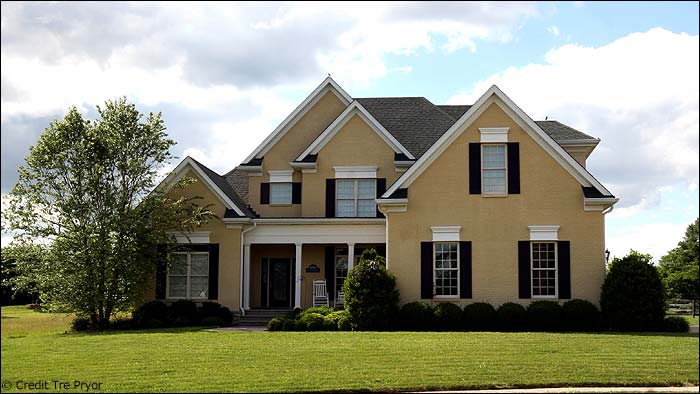In this article, we’re highlighting some of the five top tips for choosing your house’s exterior color. There was a time when various white tones were the traditional—and safe—choices for exterior paint colors. That was especially true in warmer climates because a white exterior helped keep the temperature down inside the house when it was scorching outside. But technology advances and aesthetics change and so today homeowners have a more expansive palette of paint colors to choose from, from bold blues to dark grays and browns.

5 Tips for Choosing Your House’s Exterior Color
But just because you can paint your house electric lime green doesn’t mean you should.
Other than maintaining your roof and, of course, your home’s foundation, the exterior walls of your home are very important. Not only do they protect everything inside they also display your home’s style. Here are some tips for picking the right color for your home sweet home.
Tip 1: Take in Your Surroundings
Just as the color you paint your living room needs to complement the furniture, light, and size of the space, the exterior color should take landscaping, size, architecture, and location into consideration. If your home is surrounded by a lot of lush foliage, you probably don’t want to paint the exterior a jungle green unless you want your house to disappear in the landscaping.
Consider the color of fixed elements such as roof shingles or tiles as well as driveways, sidewalks, and any decorative stonework. Look for colors that will tie in these elements the way an accent wall in a room can create a visual flow.
Also, remember that color makes a strong first impression so a visually pleasing color scheme can dramatically increase curb appeal and even help boost the resale value of your home for years to come.
Tip 2: Style Counts

In much of America, people live in what would be considered contemporary homes. But if you happen to own a Craftsman bungalow, a Frank Lloyd Wright home, a 1950s ranch, or a colonial in New England, you likely want the color to enhance the style and stay true to its classic origins. Many paint companies carry lines of paint that are historically accurate, which is important if you live in a historic district that requires adherence to certain guidelines. If you don’t have such constraints, there is always room for a creative palette that offers flair without making traditionalists cry.
Tip 3: Be Neighborly
If you live on a residential street with houses built on smallish lots lined up one after the other, it is aesthetically better to find a color that is both visually vibrant without completely clashing with the neighbors’ homes. One of the expected 2019 trends is rich, dark colors like chocolate brown, and dusky gray, which are eye-catching without being loud.
Tip 4: Have an Accent
Don’t think just in terms of overall house color. Think in terms of a palette. Paint the body of the house one color, then use a rich accent color for shutters, doors, or porches. Then finish off with a third color—which does not have to be white—for trim such as windows, railings, and
Tip 5: Embrace the Swatch
Do not select a color based on a color card. Invest the money to buy sample pints of paint and apply them to the exterior in a large enough swatch to see how it looks in living color and under natural morning and afternoon light. Yes, your house may look like a colorful checkerboard for a few days, but it’s the best way to know what the paint color will really look like. Making that effort before you buy will save the time, money, and tears of having to repaint if you don’t get it right the first time.



